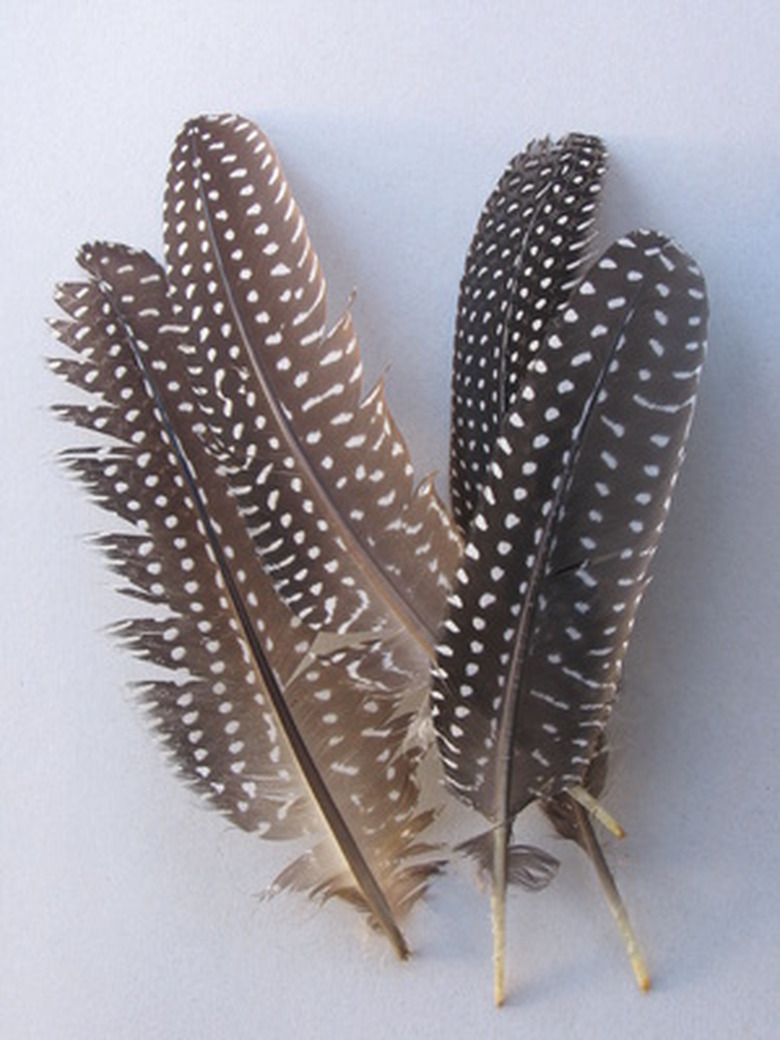About Vermicomposting With Feather Waste
The U.S. poultry industry produces a huge quantity of feather waste annually, more than one million metric tons, reported Xingen Lei and colleagues at Cornell University's Department of Animal Science in May 2010. Scientists seek ways to avoid having the feathers end up in dumps or landfills, as this wastes the protein-rich keratin structure of the feathers and causes nitrogen to pollute the environment. One possible route to reclaiming this organic refuse involves worm composting.
Significance
Feathers contain keratin, a fibrous protein also found in human and pet hair. While slow to decompose either in regular or worm composting, feathers and hair are organic and make lists of acceptable materials for worm composting compiled by sustainable agriculture organizations.
Types
Rajiv K. Sinha and colleagues at the School of Environmental Engineering at Griffith University in Queensland, Australia, note that earthworms feed on organic wastes rich in nitrogen. Worms are used to compost slaughterhouse waste, including feathers, bones and blood, as well as organic waste from kitchens, gardens, farms, sugar mills, municipal garbage collection.
- The U.S. poultry industry produces a huge quantity of feather waste annually, more than one million metric tons, reported Xingen Lei and colleagues at Cornell University's Department of Animal Science in May 2010.
- While slow to decompose either in regular or worm composting, feathers and hair are organic and make lists of acceptable materials for worm composting compiled by sustainable agriculture organizations.
Time Frame
Chicken feathers degrade during regular composting, but their high keratin content slows the process. They contain about 14 percent nitrogen, much of which may be retained by finished compost, according to Steve Kroening, School of Biological Sciences, University of Canterbury.
Size
Hobbyist gardeners report successful worm composting of feather waste in small quantities using litter-dwelling compost worms. The Bhawalkar Earthworm Research Institute (BERI) in India is developing ways for large-scale processing of organic wastes using larger burrowing earthworms such as nightcrawlers. BERI, run by chemical engineer Uday Bhawalkar, notes the worms can break down feathers and bones.
Misconceptions
Feathers associated with slaughterhouses may be contaminated with salmonella and E. coli bacteria. Even though worm composting avoids the high heat associated with regular composting as bacterial activity raises the temperature in the middle of the pile and kills off pathogens, the worms themselves appear to be able to reduce pathogen levels as they digest and process organic material. Indian zoologist Arvind Kumar found that worms could remove E. coli and salmonella from spoiled food and reduced pathogens to a greater extent in fact than regular composting. Reductions of 99.9 percent or greater are possible, he writes in "Verms and Vermitechnology."
- Chicken feathers degrade during regular composting, but their high keratin content slows the process.
- Indian zoologist Arvind Kumar found that worms could remove E. coli and salmonella from spoiled food and reduced pathogens to a greater extent in fact than regular composting.
Expert Insight
Studies of vermicomposting and pathogens also test the worm's ability to remove pathogens from biosolids present in sewage, such as a study by Bruce R. Eastman of the Orange County Environmental Protection Division in Florida reported in BioCycle magazine. Eastman's and Kumar's research suggest that vermicomposting with feather waste may also result in low tested results of pathogens in the finished vermicompost. In fact, inoculating feather waste with useful feather degrading bacteria such as Bacillus licheniformis may speed the breakdown of feather waste generated by processing plants, notes botany professor Jann Ichida and colleages at Ohio Wesleyan University, a discovery with implications for faster vermicomposting.
